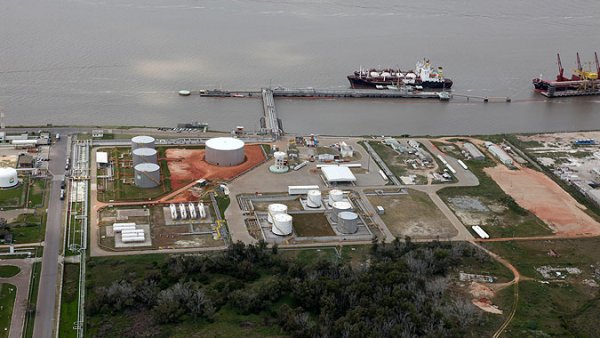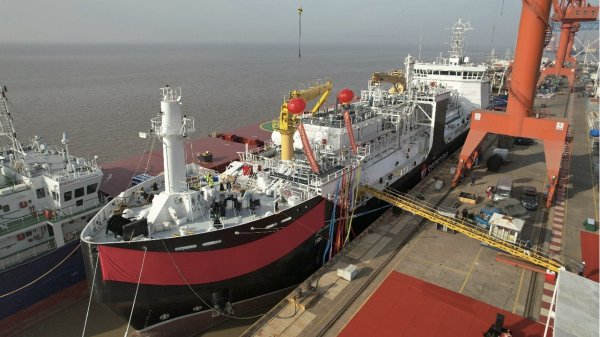New design for low-emission hybrid e-tug
'Perfectly optimized' loading of the propulsion system is said to ensure low maintenance and fuel costs.
Offshore Ship Designers (OSD) has designed what it describes as "a powerful, low-emission compact e-tug" to further augment its Azistern series of vessels. Among other roles, the vessel is equipped to deliver harbour assistance.
In a statement, OSD managing director Michiel Wijsmuller commented: "The Azistern-e has the typical low resistance stable hull and all-round visibility that is associated with all Azistern designs. What makes this particular Azistern tug different is that it is driven by a revolutionary podded drive and that it has a flexible and green electro/diesel-electric configuration."
The hybrid power of the 22-metre-long, 50 BP Azistern-e is generated by two 970-kilowatt (kW) variable speed gensets and is supported by two 400-kilowatt-per-hour (kWh) lithium battery packs. The low-emission tug can be delivered compliant with IMO Tier 3 requirements with an after-treatment system suitable for Emission Control Areas (ECAs), and is also equipped with an energy management system.
OSD says the "uniform and perfectly optimized" loading of the propulsion system ensures low maintenance and fuel costs. Transient sailing and manoeuvring can be performed using the batteries with zero emissions.
"The Azistern-e is highly manoeuvrable, and the vessel's power train has a remarkably short reaction time. By using the batteries as a booster, maximum bollard pull can be achieved within seconds. The relatively small size of the engines and the shaftless configuration frees up more space below deck, providing optimum flexibility in respect of the division of space and piping," OSD added.
In a statement, OSD managing director Michiel Wijsmuller commented: "The Azistern-e has the typical low resistance stable hull and all-round visibility that is associated with all Azistern designs. What makes this particular Azistern tug different is that it is driven by a revolutionary podded drive and that it has a flexible and green electro/diesel-electric configuration."
The hybrid power of the 22-metre-long, 50 BP Azistern-e is generated by two 970-kilowatt (kW) variable speed gensets and is supported by two 400-kilowatt-per-hour (kWh) lithium battery packs. The low-emission tug can be delivered compliant with IMO Tier 3 requirements with an after-treatment system suitable for Emission Control Areas (ECAs), and is also equipped with an energy management system.
OSD says the "uniform and perfectly optimized" loading of the propulsion system ensures low maintenance and fuel costs. Transient sailing and manoeuvring can be performed using the batteries with zero emissions.
"The Azistern-e is highly manoeuvrable, and the vessel's power train has a remarkably short reaction time. By using the batteries as a booster, maximum bollard pull can be achieved within seconds. The relatively small size of the engines and the shaftless configuration frees up more space below deck, providing optimum flexibility in respect of the division of space and piping," OSD added.

|
IMO approves pricing mechanism based on GHG intensity thresholds
Charges to be levied on ships that do not meet yearly GHG fuel intensity reduction targets. |
|
|
|
||

|
VARO Energy expands renewable portfolio with Preem acquisition
All-cash transaction expected to complete in the latter half of 2025. |
|
|
|
||

|
NYK trials biofuel in milestone coal carrier test
Vessel is used to test biofuel for domestic utility company. |
|
|
|
||

|
H-Line Shipping orders LNG bunkering vessel
Vessel with 18,000-cbm capacity to run on both LNG and MDO. |
|
|
|
||

|
How to engineer and manage green shipping fuels | Stanley George, VPS
Effective management strategies and insights for evolving fuel use. |
|
|
|
||

|
Swedish government bans scrubber wastewater discharges
Discharges from open-loop scrubbers to be prohibited in Swedish waters from July 2025. |
|
|
|
||

|
MAN Energy Solutions achieves 100% load milestone for ammonia engine
Latest tests validate fuel injection system throughout the entire load curve. |
|
|
|
||

|
Petrobras secures ISCC EU RED certification for B24 biofuel blend at Rio Grande
Blend consisting of 24% FAME is said to have been rigorously tested to meet international standards. |
|
|
|
||

|
Stolt-Nielsen to fully control Avenir LNG with acquisition
Share purchase agreement to buy all shares from Golar LNG and Aequitas. |
|
|
|
||

|
Bureau Veritas supports launch of CIMC SOE's LNG bunkering vessel
Handover of Seaspan Energy's cutting-edge 7,600-cbm vessel completed. |
|
|
|
||
Related Links
- · Rolls-Royce in agreement to supply 'extremely efficient' engines [Insights]
- · Tug-optimized power and propulsion package for Harley Marine [Insights]
- · Asia's first LNG-powered tug delivered [Insights]
- · Fuel-saving hybrid tug named in Germany [Insights]
- · Construction of Middle East's first LNG-fuelled harbour tug under way [Insights]
- · Netherlands [Directory]

